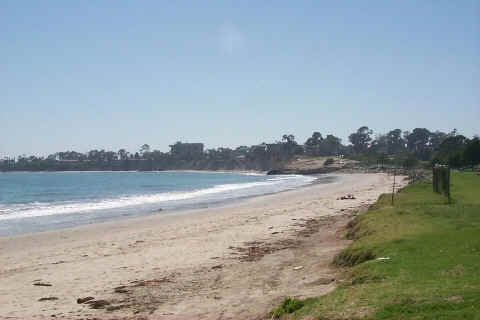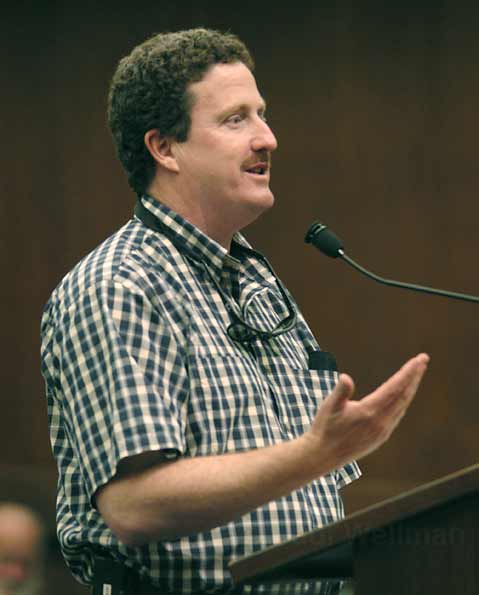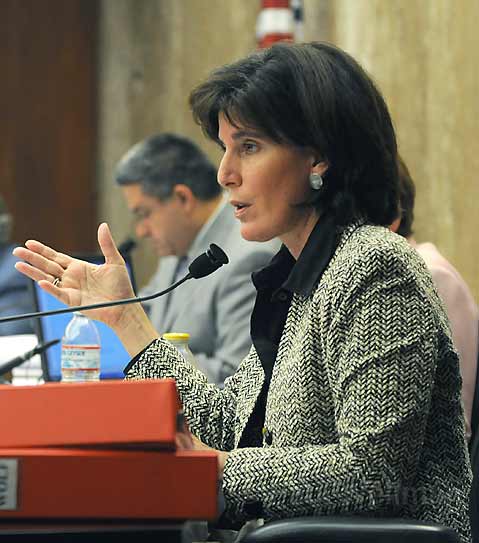Running Out of Sand
County Considers How to Save Goleta Beach

Without much fanfare, the County Board of Supervisors voted unanimously on Tuesday to press forward with its analysis of a new erosion protection plan for Goleta Beach County Park. Dubbed Goleta Beach 2.0, it amounts to a fresh start that comes in the wake of a 9-1 denial by the California Coastal Commission on July 8 of the county’s last proposal, an expensive project nearly 10 years in the making called the permeable pile pier that would have added hundreds of extra pilings to Goleta Pier in order to trap sand on the beach west of the pier. More significantly, perhaps, the board’s action exhibits a major reversal in the county’s formerly adversarial stance toward the controversial managed retreat option. Pursued doggedly by environmental activists for the better part of a decade, managed retreat has continually raised the ire of many people who view the park as an indispensable community resource because it involves reconfiguring the park to allow a natural storm buffer, but also because the name implies defeat. “Retreating is un-American. I like to think of it as a graceful exit from hazard areas,” said David Revell, a coastal scientist who had worked on an independent study commissioned by the Environmental Defense Center (EDC).

Figuring out what to do with Goleta Beach has been a long and contentious process as it is arguably one of the county’s most heavily used parks. El Ni±o storms over the past few decades have wreaked havoc on the beach, at times almost completely wiping it out. The county responded by protecting the park’s grassy area with rocks, a move environmental groups said made the situation on the beach worse. Many of the park’s users favored the approach initially offered by engineering firm Moffatt & Nichol, which involved the possibility of building rock walls along the pier and offshore, as well as placing large quantities of dredged sand on the beach on a regular basis.
Public opposition to the use of hard structures led to the development of a tamer design-the permeable pile pier-that still involved regular sand dumping and a hefty $20 million price tag. Environmental groups said that even this approach would limit the natural flow of sand down the coast toward Carpinteria, starving beaches of sand east of Goleta. Working together, the EDC and the Santa Barbara Chapter of the Surfrider Foundation continued to push park reconfiguration — an option they say is similar to managed retreat, but offers more park area — which they maintained would have less impact on other beaches and, at an estimated cost of $8.4 million, cost taxpayers less. “I really like to think that managed retreat is the most cost-effective option,” said Revell.

Although the county’s staff had spent considerable time and resources getting the ill-fated permeable pile pier project off the ground, staff members were adamant that the county has no intention of appealing the Coastal Commission’s decision. “I find it outrageous that the Coastal Commission would even consider managed retreat, which amounts to abandonment,” said Coalition of Labor, Agriculture, and Business (COLAB) Executive Director Andy Caldwell at Tuesday’s meeting. Fifth District Supervisor Joe Centeno responded directly to Caldwell’s comments, in effect saying that the county didn’t have the resources to deal with the fees his staff said are sure to accompany defiance of the Coastal Commission’s directive. In another departure from the original project, Goleta Beach 2.0 lacks participation by Moffatt & Nichol, which not only designed the recently defeated project, but for years had been kept on retainer by the county in an advisory capacity.
While he said he recognized the need for an effective plan to deal with erosion at Goleta Beach, 1st District Supervisor Salud Carbajal voiced his desire that the flow of sand toward beaches in his district not be disrupted. Although the county is far from making a final decision on the best approach to the problem-managed retreat had not even been formally mentioned by county officials until Tuesday’s meeting-the Goleta Water District’s Board of Directors last month discussed moving the water main running through the park to a more protected inland location. In addition, Congress authorized a $500,000 appropriation this summer for a U.S. Army Corps of Engineers study of shoreline protection at Goleta Beach.
Still reeling from accusations of backroom deals-most notably a $70,000 public relations campaign paid for by the County Parks Department to promote the permeable pile pier-county staff was emphatic about its dedication to a transparent process this time around. “This is a new day where we can come together, work together, and have a beach we can all be proud of,” said 2nd District Supervisor Janet Wolf, in whose district Goleta Beach is located.



